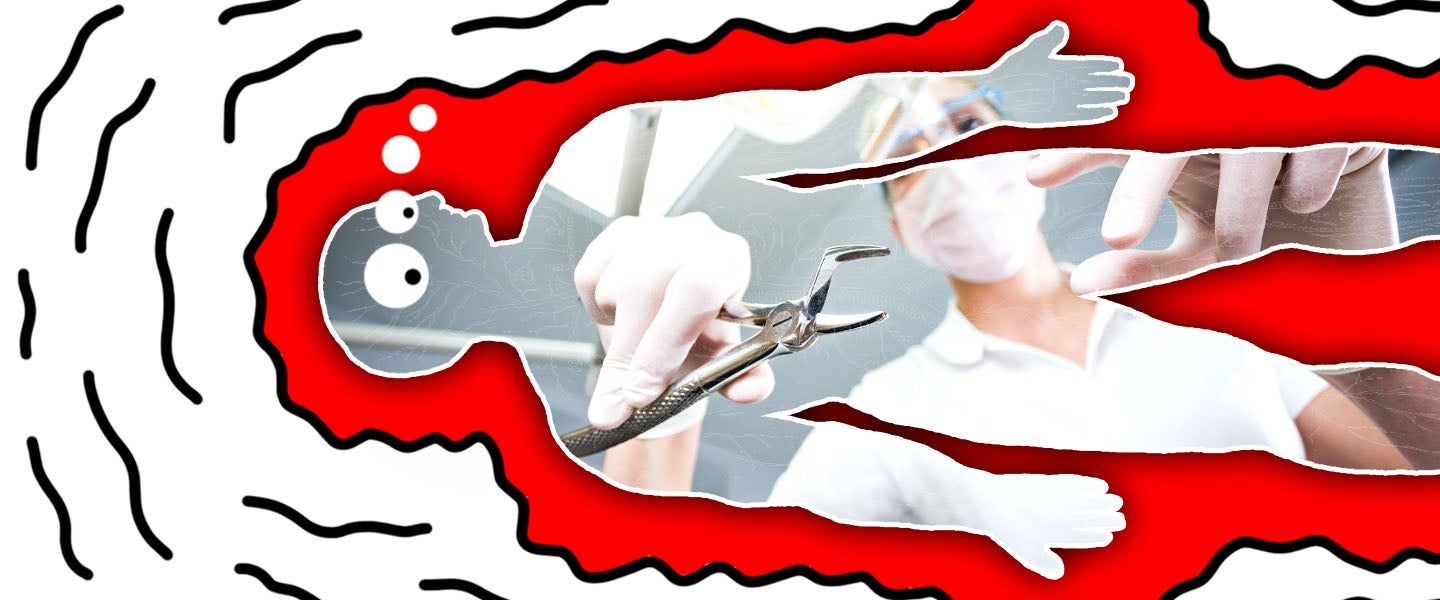The human body: An inspiring biological work of art? Or a meaty sack of germs and fluids? Either way, there’s still a lot we don’t know about what goes on in there — and scientists are constantly attempting to find out more. Here are the most interesting things we learned about our bodies in the last seven days…
The Dentist Really Is Just A Sadist Who Wants to Make You Feel Pain
Maybe all that stabbing and scraping the dental hygienist does has a purpose, but new research suggests that all that drilling your dentist does may be for naught. Case in point: For years, dentists have thought that tooth decay spread quickly, meaning that decaying areas needed to be drilled out immediately lest it spread to healthy teeth. But a recent study published in the journal Community Dentistry and Oral Epidemiology showed that tooth decay can actually take years to spread or become a problem, and there are many other possible treatments besides drilling.
Thing is, it does still involve some work on your part. Better brushing, reduced sugar intake and fluoride varnishes are all part of those other possible treatments. Seems like a fair trade-off, though: A few less Snickers > your misery-craving dentist with a drill (or worse).

All Those Meetings Are Making You Stupid
That conference room you get stuck in for hours at a time to discuss God-knows-what is indeed making your brain go as numb as it feels.
Basically, being holed up with a dozen or so people around a table discussing numbers and strategy makes the room warm up and fill with CO2. And since your company wants to save on heating and cooling costs by making the building a sealed-off box, all that CO2 sticks around. Unfortunately, large amounts of CO2 on the human brain can lead to reduced communication between areas of the brain, dilated blood vessels and reduced neuronal activity.
To wit, in a controlled study at Harvard University, researchers found that participants exposed to moderate levels of CO2 performed worse in decision-making and problem-solving tests compared to those who weren’t.
Score another win for fresh air.
Surprise! Having A Fucked-Up Childhood Make You A Depressed Adult
A study published in Neuropsychopharmacology showed that rats who had experienced “early life adversity” and were dosed with the stress hormone corticosterone were less likely to anticipate positive outcomes and failed to properly learn about reward value. In human terms, this could mean that people who experience early-childhood trauma are more likely to become depressed later in life, with a pessimistic outlook and lack of desire to do enjoyable things.
Shocking, I know!
The next step in this study will be to measure the effectiveness of antidepressant treatments on the rats, including ketamine. Not that anyone is suggesting giving ketamine to kindergarteners — yet.
There’s A Tiny Place for Pokémon in Your Brain
People who played Pokémon as kids were found to have a little cluster of brain cells devoted specifically to Pokémon knowledge (how much is that part of the brain gonna love Detective Pikachu?!?!?!?!). According to a recent study at Standford University, the cognitive ability to identify Bulbasaur or Butterfree is stored in a constellation of neurons in the temporal lobe. A similar phenomenon occurs when we recognize just about any familiar name or face. For example, in 2005, researchers identified a “Jennifer Aniston neuron,” which helps us identify the actress. Similar neurons have been discovered for other celebrities as well.
Of course, we aren’t just born with the recognition of Jennifer Aniston or Pokémon cards. Instead, these neurons become designated to the visual stimuli we’re exposed to throughout our lives. Exactly how this works isn’t yet understood, but it confirms that there really is an area of your brain dedicated to your favorite fandom.
My only question: Is my Insane Clown Posse obsession so strong that my temporal lobe would recognize Violent J and Shaggy 2 Dope both with and without their makeup?
When the Reaper Comes, He Walks, Not Runs
Death is often thought of as an instant: the brain stops, and you’re done. Well, wrong! Scientists recently tested the brains from pigs that had been slaughtered a few hours prior and found that blood circulation and certain brain functions can partially be restored even after the pig is well on its way to becoming sausage. It doesn’t mean a whole lot for us yet, but it does reveal a bit more about how the brain survives independent of the body, and for the potential of brain resuscitation in the future.
Or it means we’re well on our way to creating zombies.

